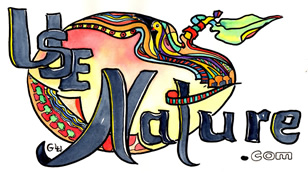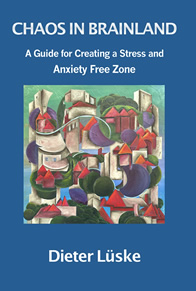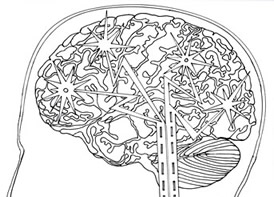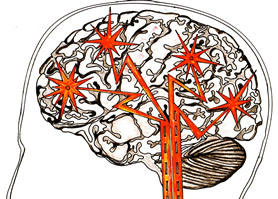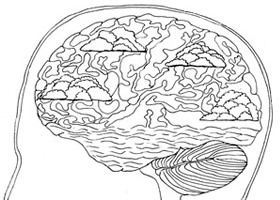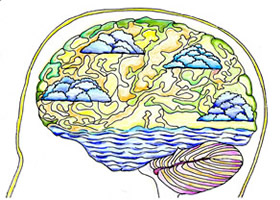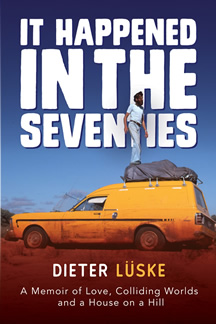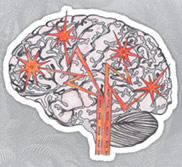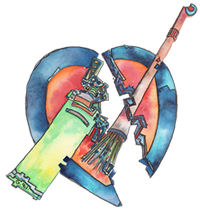useNature.com ... Brain Plasticity & Chronic Pain Therapy
Article: Chronic Pain Treatment Protocols
Brain Plasticity - Chronic Pain - Part 1
... therapy strategy including holistic principles, combining treatment modalities.
..... by Dieter Luske N.D.-D.C.H.-D.M.H.-D.H
Holistic Therapy Consultant - Gold Coast - Canungra
Author of It happened in the seventies ... and ...
|
Chronic Pain Treatment:
The concept of treating chronic pain is vastly different from acute pain.
If we accept that our brain is "alarming" our mind with a feeling of pain somewhere in our body, than we also can accept that once "alarmed" and taken steps to deal with the acute pain, the "alarm" is not needed anymore.
If there is a chronic pain anywhere in the body, for any reason, the concept of Brain Plasticity can work in a negative way, by strengthening and widening the pain pathways, and therefore can cause more pain for no apparent reason other than the now established - chronic - neuron "highway". Maybe that's where the saying comes from; "Highway to Hell".
All this may be a bit oversimplified, but will work in regards to pain treatment protocols.
The treatment concepts are as follows:
-
Disrupt or weaken the pain Neuron pathway, which can be also phrased as; "unlearn the pain".
-
Support the creation of New pathways, meaning; to learn another way to react to the pain.
-
Neuroplastic Competition Concept;
In order for pain to be chronic, it has been"pinching" more and more pathways from adjacent brain areas, competing for space with brain function situated and attributed next to the pain centre area.
This is one of the reason, chronic pain sufferers report trouble of thinking, concentrating, and often have visual and hearing problems, or can't control their emotions.
Their pain area has enlarged to such an extent that adjacent brain areas are negatively impacted.
- Who will win this competition?
The area of the most intense focus will win, to be sure it will be the area you want it to be, you need to "pinch" back neuron pathways from the pain area, to win this competition. The areas in question are many, however, in order to develop a treatment strategy, we will concentrate our efforts just on 3 main areas, which by their nature will influence other areas as well.
3 main adjacent brain areas affected by pain:
-
Visual area: Vision and visualisation is a highly concentrated brain effort. By simply visualising, you start "pinching" back some neural pain pathways, urgently needed for this complex visualisation task. It is important to realise, that it is the function of visualisation that is the determinant factor of success. What you actually visualise is secondary, however because visualisation is such a highly concentrated task, it is of vital importance to have a "visualisation real picture and script".
-
Creativity, intuition, planning area:
This area is not as intensely involved as the visual area, but as we will see in the following treatment protocol, it will enhance and support the visual impact, by learning a new visual, creative and intuitive task, that of drawing or painting.
The therapy recommended for this area: "Art Classes".
Art has further benefits of accessing the right brain area and helps to access the relaxing Alpha Brain wave. Being relaxed alone will help with chronic pain.
- Thinking area - Concentration - Problem Solving:
This may sound complex, but to concentrate on a task at hand will diminish the pain area, and therefore the pain.
The therapy recommended for this area: "Brain Exercise", it makes sense to use the one developed by Dr. Michael Merzenich PhD, Brain HQ from Posit Science.
Additional Concepts to be worked into the Treatment Protocol:
-
Concept: "If you do what you always do, you get what you always get". Tip; make sure you get something else, react to your pain in a different way, by example: Visualise (think different) - behave different - changing an activity ....
-
Concept: "What you resist, persist". Tip: Don't resist your pain, don't fight it, relax and focus on something else.
-
Concept: "Whatever you focus your energy on, is getting bigger/stronger". Tip; put all your focus on positive visualisation and other activities, esp activities that are slightly diminished by the chronic pain, such as concentration, problem solving, learning a new practical or mental skill. A language or a creativity skill, such as art or a musical instrument.
Chronic Pain suggested Treatment Protocol
For best results, the treatment protocol should be individualised, eg, develop your own preferred visualisation and extra activities.
Additional Treatments may be applied to deal with the pain directly, such as massage, acupuncture, actually any modality suitable and appropriate.
NOTE: Brain Plasticity based treatment means to unlearn something, and to learn something new, a process which needs time, motivation, and discipline. Treatments may need to be practiced, or applied 3-5 times daily for many weeks.
This treatment needs a highly motivated and active participant, and part of the treatment will be the moral support which is needed to stay focus.
Treatment Protocol:
How to apply the Visualisation Therapy:
A quick reminder; it's all about use it or lose it; whichever area in your brain gets more attention will grow.
If the chronic pain gets all your attention, it will grow.
If Visualisation and other brain areas get most of your attention, they will grow, and in turn, the pain area now getting less attention, losing neuron pathways, resulting in less pain.
The main treatment will consist of visualising 2 images.
-
The first image is the "Brain in Pain". As you probably don't have an individualised pain map to look at, (MRI) I suggest you visualise an image which represents the brain in pain.
Suggested Image: Lots of roads or wires all heading in one direction and occupying large areas of your brain, all in red colour. - The second image is the "Brain without Pain". Again imagine how this could look like, and make up an image.
Suggested Image: A brain with relaxing cool and healing colours, mainly blues and greens.
Visualisation Aim:
To see the first image in your minds eye and replace it with the second image.
Absolutely full attention needs to be given to this visualisation task to overcome the original pain response. As more vivid, strong and intense that visualisation is, the better it will work. To get the desired effect, it is vital to have a precise image, and to know exactly how to apply it.
If your pain is constant, use visualisation sessions as often as you can, at least 6 times daily, each time of 5min or longer.
If pain is intermittent, with phases of more and less intense pain, always "react" to the pain with a strong determined visualisation session.
Recommended Visualisation Treatment Training:
-
Define and create your images, make a drawing of it, and "colour it in", this will make it easier to visualise.
Now, that you have an image in front of you, you can look at it, then close your eyes, and visualise the image.
Do it as long as it takes to have a strong visualised image.
I also recommend to repeat this exercise from time to time. Do that with both of your images.
NOTE: I am working on Brain Visualisation Picture Drawing Templates, to be PRINTED out and COLOURED IN ! -
For one day use the visualisation every hour or as often as possible.
visualise the first image, and after a few seconds replace it with the second image, and hold that image as long as you can, even make it into a movie, and see beautiful blue and green brain areas, it's Ok to add some imagination, such as beautiful flowers, trees, garden pathways .. -
Now that you have perfected your visualisation, do it 5 times daily and anytime you noticed your pain or have an intense pain spike.
- Keep this treatment going for at least 6 weeks. Be aware, that you may not feel improvement at the beginning, pain relief will depend on each individuals pain intensity and nature of the problem.
I have stressed before, that motivation and intensity are of vital importance. To support your motivation and effort, I will now describe several visualisation techniques to intensify your efforts and make it even more interesting as well as challenging. As more challenging a visualisation technique becomes, as more intense and concentrated it will be.
NOTE: If all this is too new or involved, I recommend to start with a basic relaxation exercise, continue with meditation practice and graduate into visualisation. I recommend to read all the brain plasticity articles for a deeper inside as well as the mentioned books, and join our Holistic Brain Plasticity Facebook Group
Now, start from the top again and - Visualise
Brain Visualisation Picture Drawing Templates, to be PRINTED out and COLOURED IN
Copy template - colour it in - look at it intensely - close eyes and visualize it - open eyes - close again, repeat till you can visualize the picture easily.
Do the same with the second picture.
For stress reducing Colouring In Templates, or Colouring in Classses see: Adult Colouring In
... continue to > Part 2 - Additional Visualisation Treatment Techniques
... or go back to the main Brain Plasticity Menu
Please contact me directly for more info or Research Participation: Dieter L. - Editor
... more colouring in therapy templates
* Disclaimer - Any general advice given in any article should not be relied upon and should not be taken as a substitute for vis iting a qualified medical Doctor.
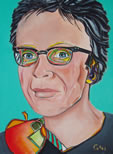 Dieter Lüske - Editor
Dieter Lüske - Editor
N.D.-D.C.H.-D.M.H.-D.H
Editor's Articles
Buy Now
It happened in the seventies
A Memoir of Love, Colliding Worlds and a House on a Hill
Intriguing story of personal risk-taking, self-discovery and profound change.
Dieter Luske
author . writer . editor
Brain in Pain Visualisation
Sticker and T-shirts
- more..
Brain Plasticity Menu
Holistic Brain Plasticity
© 1998 - 2025 useNature.com: Australia - Natural Health and Lifestyle Information Services - Books
Site Map - Terms / Privacy - Endorsements - Global Health | Free Alpha Music | Photography | Natural Links |
